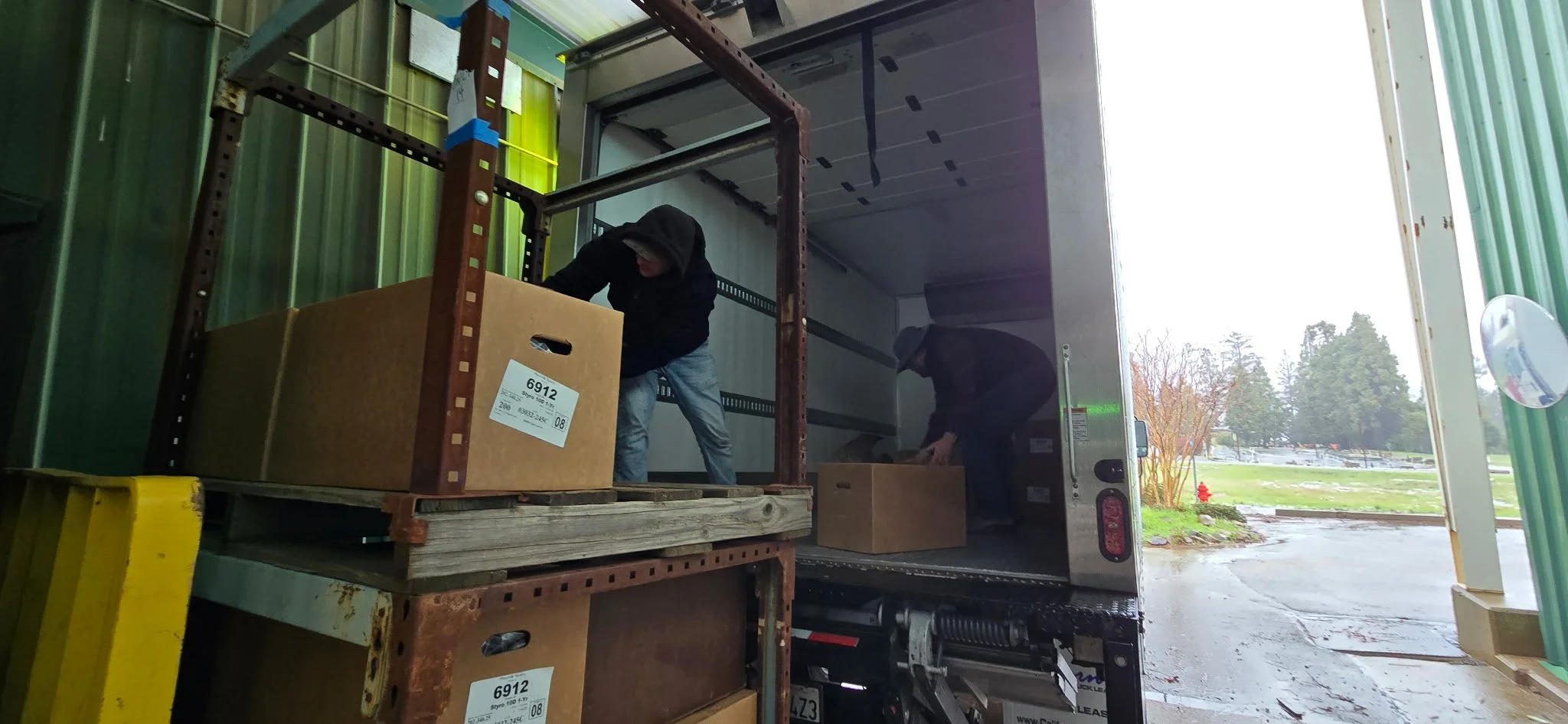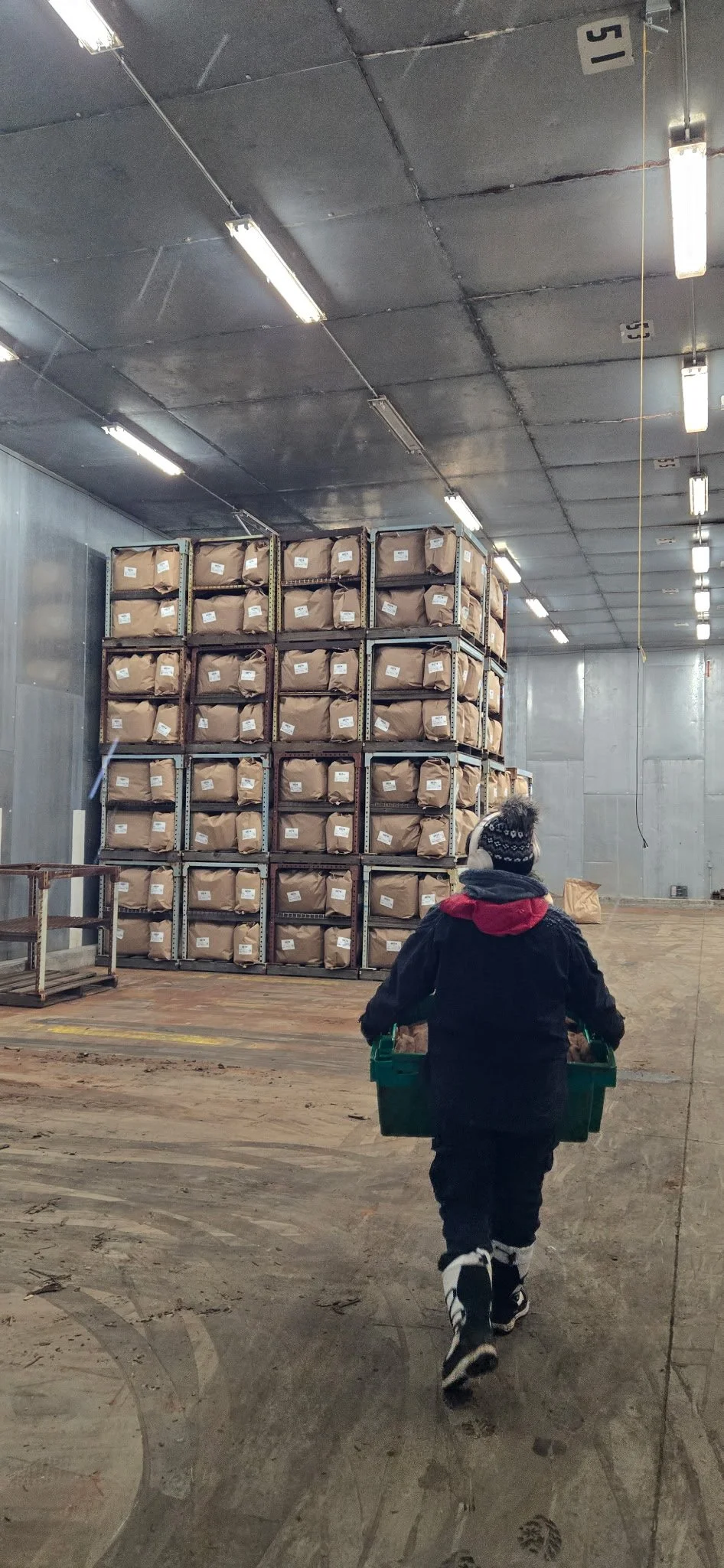CLERC Kicks Off Major Reforestation Effort in Mendocino National Forest
Despite snowy conditions on March 14, 2025, CLERC staff made the journey to the USFS Placerville Nursery to pick up thousands of seedlings destined for replanting in the Mendocino National Forest. To ensure the seedlings remain viable until planting time, CLERC leased a refrigerated truck from a Sacramento-based firm, keeping the young trees at the optimal temperature until they are ready for planting.
The CLERC Team pauses for a selfie at the US Forest Service Placerville Nursery, March 14, 2025.
The first 150 acres of site preparation are scheduled for completion by the end of April 2025, laying the groundwork for the planting of the first wave of seedlings shortly thereafter. This year, 21,000 seedlings will take root, marking the beginning of an ambitious reforestation initiative that will see more than 200,000 additional trees planted in the coming years. This project represents the first large-scale replanting effort in the Mendocino National Forest since the devastating wildfires of 2018 and 2020.
Will Evans, CLERC Co-Founder and Executive Director, and Marcus Brown, CLERC Fire and Forestry Project Coordinator, load seedlings into a refrigerated truck at the USFS Placerville Nursery, March 14, 2025.
To execute the critical on-the-ground work, CLERC has partnered with Patriot Restoration Ops (PROPS), a nonprofit organization dedicated to helping military veterans transition into civilian careers in conservation and land management. PROPS plays a crucial role in not only restoring forest landscapes but also in providing veterans with meaningful employment opportunities in the land stewardship industry. Their innovative program addresses the need for a skilled workforce while directly contributing to vital conservation efforts across the West.
A look inside the tree cooler at the US Forest Service Placerville Nursery, March 14, 2025.
CLERC is also taking a forward-thinking approach by incorporating scientific research into its replanting strategy. In collaboration with experts at UC Davis, CLERC developed a climate adaptation model tailored for the Mendocino National Forest. This model will guide planting efforts, ensuring that the forest is resilient to anticipated climate shifts and has the best chance of thriving in the future.
This transformative reforestation initiative is funded by the CAL FIRE Forest Health Grant Program, which supports projects aimed at restoring fire-impacted landscapes and enhancing forest health.
As an organization committed to environmental and economic sustainability, CLERC continues to lead efforts to restore fire-damaged lands, mitigate the risk of future megafires within the Wildland Urban Interface (WUI), and safeguard our forests for generations to come. This project is a significant step forward in creating a healthier, more resilient landscape while advancing CLERC’s mission of stewardship and sustainability for Clear Lake, its surrounding ecosystems, and beyond.
Funding for North Shore Restoration Fuels Reduction was provided by CAL FIRE’s Forest Health Program, as part of California Climate Investments. California Climate Investments, a statewide program that puts billions of Cap-and-Trade dollars to work reducing GHG emissions, strengthening the economy, and improving public health and the environment– particularly in disadvantaged communities. The Cap-and-Trade program also creates a financial incentive for industries to invest in clean technologies and develop innovative ways to reduce pollution. California Climate Investments projects include affordable housing, renewable energy, public transportation, zero-emission vehicles, environmental restoration, more sustainable agriculture, recycling, and much more. At least 35 percent of these investments are located within and benefiting residents of disadvantaged communities, low-income communities, and low-income households across California. For more information, visit the California Climate Investments website at: www.caclimateinvestments.ca.gov



